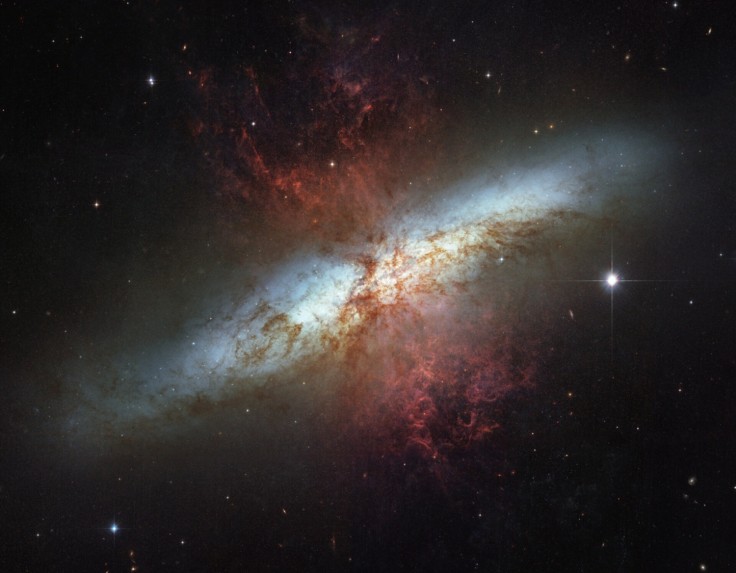In its more than 30 years of service, the Hubble Space Telescope has given us countless awe-inspiring photos of galaxies, star clusters, and so many more. Such is the case with the photo that was released for its 16th anniversary.
The photo released on the Hubble's 16th anniversary features the Cigar Galaxy. Here is what you have to know about Hubble Space Telescope, the Cigar Galaxy, and the photo that was taken more than a decade ago:
Cigar Galaxy
Before we talk about the photo itself, let us first talk about the subject of the photo.
The Cigar Galaxy, otherwise known as Messier 82 or M82, was discovered in 1774 German astronomer Johann Elert Bode, according to the National Aeronautics and Space Administration (NASA). It has become known as the Cigar Galaxy due to its elongated and elliptical shape.
It is located around 12 million light-years away from our planet, residing in the constellation Ursa Major, which is also known as the Great Bear.
The European Space Agency (ESA) describes it as "a galaxy remarkable for its webs of shredded clouds and flame-like plumes of glowing hydrogen blasting out from its central regions." The agency also refers to it as a starbust galaxy, noting that stars in the galaxy are being born 10 times faster than in our own galaxy, the Milky Way.
Related Article: #SpaceSnap: Hubble Space Telescope's Snaps Photo of Bubble Nebula for Its 26th Anniversary
Hubble Space Telescope's Photo of the Cigar Galaxy
When the Hubble Space Telescope celebrated its 16th anniversary in 2006, a photo of the Cigar Galaxy it took was released to the public. Per the ESA, the telescope's Advanced Camera for Surveys' Wide Field Channel was used to take photo.
You can view the Hubble Space Telescope's photo of the Cigar Galaxy below:

Hubble Space Telescope
One of NASA's five Great Observatories, the Hubble Space Telescope got its name from American Astronomer Edwin Hubble. The space telescope is a collaboration between NASA and ESA.
It was initially intended to be launched in 1983, but it was delayed due to budget and technical issues, as well as the Challenger disaster, which happened in 1986. It was not until April 24, 1990 when the telescope was launched from the John F. Kennedy Space Center in Florida.
According to the Hubblesite, the space telescope is orbiting our planet at "an altitude of about 340 miles (547 kilometers), inclined 28.5 degrees to the equator." It travels at a speed of around 17,000 miles per hour (27,300 kilometers per hour) and completes one full orbit in 95 minutes.
The Hubble's current suite of instruments include the Advanced Camera for Surveys (ACS), Cosmic Origins Spectrograph (COS), Fine Guidance Sensors (FGS), Space Telescope Imaging Spectrograph (STIS), and Wide Field Camera 3 (WFC3).









